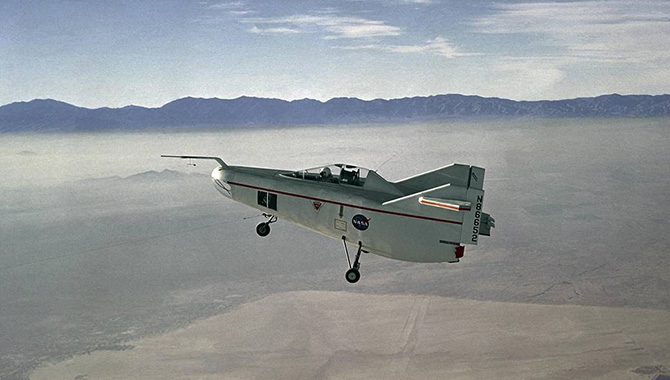
After a successful splashdown in the Atlantic, Alan Shepard is lifted aboard a U.S. Marine helicopter. The Mercury Freedom 7 capsule, below, was water tight and in good enough shape to be reused.
Photo Credit: NASA
Mercury-Redstone 3, the first American manned mission to space, engaged the world—and cleared a path to the moon.
On May 5, 1961, Alan Shepard became the first American astronaut in space when he left Cape Canaveral in the Freedom 7 capsule to soar more than 116 miles above Earth. Shepard wasn’t the first person in space; cosmonaut Yuri Gagarin had orbited the planet in Vostok I three weeks earlier. But Shepard’s flight accomplished something critical: it engaged people from around the world by broadcasting the event live on TV. That was a gamble: if the flight had failed, it would have been a high-profile disaster for the fledgling space agency, which had only been formed under the name NASA three years earlier. But the agency made the decision to contrast the American space program with the Soviet mission, which had been conducted completely in secret. As a result, millions of people tuned in to see Shepard climb into the capsule, rocket out of Earth’s atmosphere, and land just over 15 minutes later in the Atlantic Ocean near the Bahamas.
Shepard’s flight was part of NASA’s first astronaut program. Project Mercury, which ran from 1958 to 1963, ultimately conducted six manned flights and introduced the nation’s first astronauts, known as the “Mercury Seven”: Scott Carpenter, Gordon Cooper, John Glenn, Gus Grissom, Wally Schirra, Alan Shepard, and Deke Slayton.
On February 22, 1961, three men were identified as candidates for America’s first spaceflight: Glenn, Grissom, and Shepard. While the public wasn’t told who would go up in Freedom 7 for another few months, the astronauts knew Shepard had been selected, with Glenn as his primary back up. The two trained extensively. Shepard worked with the capsule in the hangar to get a sense of its attitude control system and in the altitude test chamber to understand its environment control system. He flew 120 “flights” in the Mercury simulator, where he familiarized himself with the procedures he would perform before, during, and after launch. The team conducted mock countdowns and rehearsal flights, and even planned the postflight debriefing process. By the time May 1961 rolled around, they were ready to go.
The goals of the flight were straightforward: to better understand the effects of zero gravity on an astronaut’s physiology and ability to function, and to conduct a successful recovery after landing. Because the Redstone booster had experienced trouble in the past, some worried Project Mercury wasn’t truly human-rated. Others were concerned that the effects of weightlessness would render the astronaut dizzy and unable to control the craft. But after Gagarin’s successful orbit of Earth, the objections quieted. America was ready to surge ahead in the race to space.
At 9:34 a.m. EST, on May 5, Freedom 7 roared toward space aboard a Mercury-Redstone launch vehicle. It reached a maximum height of 116.5 statute miles—less than half the orbiting height of the International Space Station, but higher than any American had gone before. The spacecraft sped through space, going as fast as 5,134 miles per hour during its 15-minute suborbital journey. The mission was an unqualified success.
Inside the capsule, everything went as planned. The extensive training Shepard had done before launch paid off; he later said the actual flight conditions were very similar to his experiences in the simulator. The capsule hit a rough patch as it reached transonic speeds, where the transition to supersonic flight is known to be rocky. About a minute and a half into the flight Shepard experienced maximum aerodynamic pressures, but after that the flight smoothed out. While maintaining voice contact throughout the journey, Shepard successfully performed his tasks, using the manual control system to adjust the spacecraft’s attitude, reporting back on his visuals of the landmasses below, and switching successfully from manual control to automatic to fly-by-wire, which was a combination of the two. His actions confirmed that weightlessness did not interfere with astronaut functionality.
Freedom 7 splashed down without incident and Shepard was transported by Marine helicopter to the USS Lake Champlain. Thirty minutes later, President Kennedy spontaneously called to congratulate him and on May 8 presented Shepard with NASA’s Distinguished Service Medal Award.
But the impact of the flight didn’t end with the successful recovery. The world was thrilled by what it had seen. NASA was lauded for its transparency in inviting millions to witness what might have been a high-profile failure and Mercury’s success made people around the globe hungry for more. Weeks later, on May 25, 1961, President Kennedy promised them exactly that by encouraging Congress to support a push toward the moon. Congress agreed and the Apollo Program was refocused as a lunar-landing mission to be achieved within the next 10 years.









